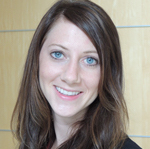
“A sustainable world already exists. And we need to access that wisdom, that knowledge, those design blueprints, those chemical recipes, those ecosystem strategies, and even that purpose,” Janine Benyus, co-founder of the Biomimicry Institute, said at the 2016 Sustainable Brands Conference.
“Biomimicry is the conscious emulation of 3.8 billion years of time-tested wisdom,” Benyus continued. It doesn’t mean extracting, domesticating or harvesting organisms. It means learning from nature.
Clients approach Benyus with design problems and ask: How would nature solve this? Does the natural lend a solution that will let us leapfrog to the answer?
Some of the design questions and answers go like this:
Q: How does nature create the color white without pigment, without chlorine? A: We whiten our paper with chlorine. But polar bears, moths and beetles create the color white by using structures that scatter light.
Q: How does nature capture pollutants from a moving stream of fluid? A: Mangroves pull out sediments to make land. Their root columns are in very specific locations. This insight helped a waste energy company get lead and cadmium particulates out of the flow going up smoke stacks.
Q: How can we repel bacteria without harsh cleansers and antibiotics? A: A shark does it with diamond-shaped bumps on its skin. Now, a company called Sharklet Technologies is using the design to prevent bacteria pathogens from taking root in hospitals and bathrooms.
Q: How does nature preserve? A: Tartigrades are an animal that can survive extreme heat and nearly freezing temperatures. Vaccines are now being wrapped up using the same process so they don’t need refrigeration.
Q: How does nature manufacture without heat, beat and treat? A: If you’re a spider and you need to make fiber in or near your own body, you don’t use harsh chemicals or high temperatures.
The questions are endless. For more examples, you can watch Benyus’s recorded session on the Sustainable Brands Conference website.
At the conference, KoAnn Vikoren Skrzyniarz, the founder of Sustainable Brands, asked Benyus: “What does nature teach us about leadership?”
The answer to this question is long but easy to understand. When figuring out how to lead a social group toward a worthy goal, Benyus said we should examine herds of zebras and flocks of geese. “Leadership for collective action is distributed, shared and purposeful,” she explained. In these situations there isn’t just one leader. There are multiple leaders who take turns so the leadership is distributed. The leaders are subject-matter experts who set the direction for the rest of the group to follow. And they all share one purpose: to continue life.
The rules for this type of collective pursuit are simple: Avoid colliding with teammates; align your direction and speed; stay in group formation; and, every once in awhile, randomly dart out to find good food somewhere.
So, how does this play out in real life? Cities and brands should be generous and produce ecosystem services which should be measured. For example, cities should produce as many ecosystem services as the wild land. There should be ecological performance standards for carbon sequestration, pollination, erosion control, air filtration, water purity, and water and carbon storage. They should meet or exceed the level of ecosystem services provided by the native ecosystem and there should be per acre metrics. Such requirements would mean the leadership is distributed, shared and purposeful.
Some buildings are already starting to function this way. One building Benyus cited releases three times cleaner air than the air that goes into it. A factory is trying to turn itself into a forest, a river flat Eucalypt forest to be precise. Another company is imitating a coral reef by taking CO2 from smokestacks and shooting it through brine or seawater to precipitate limestone.
“This is how we get to become a welcome species on the planet,” Benyus said. “I have great hopes that our purpose is turning toward, Elon Musk forgive me, not going to Mars but actually staying on this home which is ours but not ours alone.”
Image credit: Maarten van den Heuvel via Unsplash

Renee is a social impact strategist who works with companies to help them focus on key social and environmental opportunities. She loves connecting with people so feel free to contact her at renee.a.farris@gmail.com.














